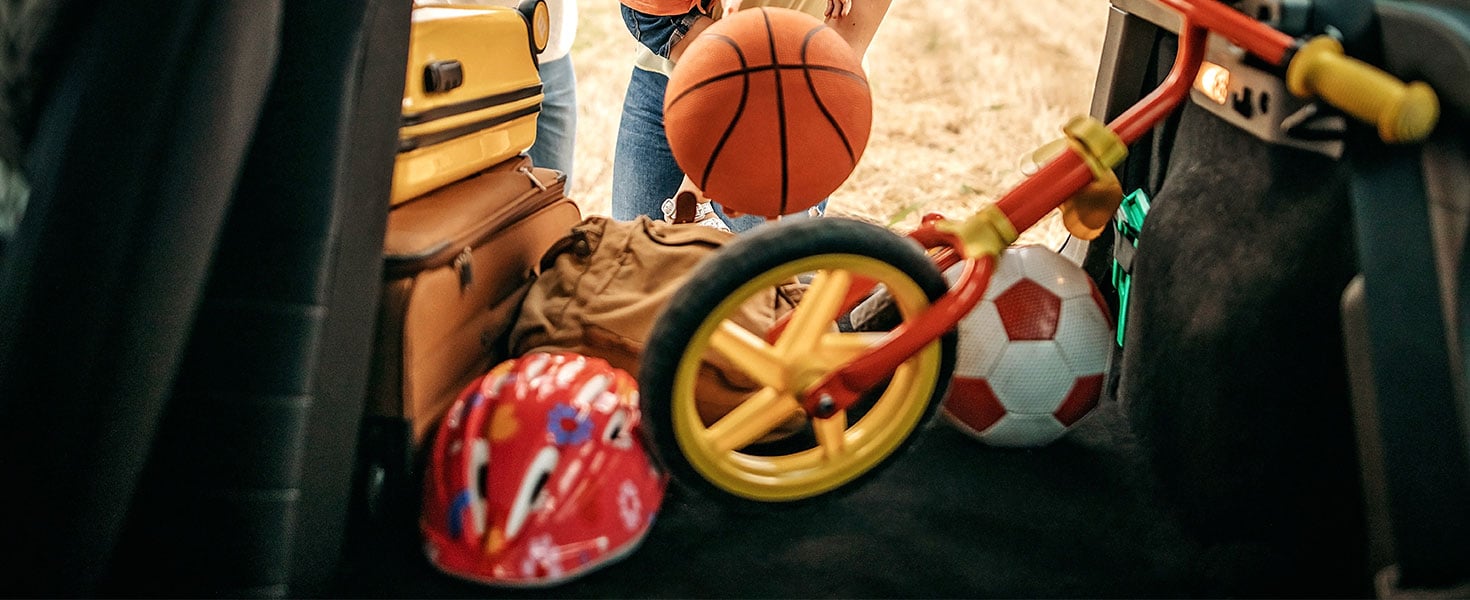A Guide to Packing Sports Equipment for Youth Travel Sports
Tips on packing sports equipment when flying or driving


Parents start their kids off in sports for a range of reasons – for friendships, for camaraderie, for physical activity. In the beginning, children's sports involve little more than a Saturday morning hour spent on the soccer field. As kids get older, there are twice-weekly practices, local tourneys, then travel teams that take kids and parents across the state, the region, even across the country.
Unfortunately, as kids get older, it's not as simple as showing up on the sidelines. There's a lot to consider, most importantly, how to get your child's hockey sticks, baseball bats or lacrosse sticks, even golf clubs or fencing foils, to sporting events.
Sporting equipment needs to arrive on-time and without any breakage. Here's what to know about packing and traveling for youth sporting events.

How to pack up sports equipment
Keep it all together. Get a large duffel bag to store all your child's equipment and gear, like sticks, pads and helmets, as well as water bottles and athletic tape. Also, think about screwdrivers and duct tape for quick fixes on the fly. It's best to keep everything your child needs to play in one place.Choose a duffel bag made of heavy-duty, water-resistant fabric that can survive rain delays. Some have durable wheels to ease transport from the car to the field. If youth sports will take you on a plane, get a duffel that can stand up to baggage handlers, cargo loaders and conveyor belts.

Make sure your car is road ready
There's a lot to consider before piling into the car for a road trip to a sports tournament. You need so much more than when you're on the field for the afternoon, like a stocked cooler, healthy snacks, a folding wagon, sunscreen and a first-aid kit, as well as sealable laundry bags (for stinky clothes).
You'll also want to make sure your car is ready to go. Before you back out of the driveway, get an oil change if your car is due and make sure you have jumper cables, a spare tire and an emergency roadside kit, at the very least.
When it's time leave the house, safely pack sports equipment in the car, making sure not to pile a full cooler and suitcases on top of your child's lacrosse sticks or baseball bats. It's wise to leave the house feeling good and well-prepared.
Know how to fly with sports gear
If you're planning to take a plane to a sports tournament, check in with the Transportation Security Administration (TSA). They keep an official, searchable list of what you can and cannot bring on a commercial airplane, both in carry-on and checked bags.For example, TSA spells out that any sports equipment that can be used as a bludgeon, like bats, sticks and clubs, are prohibited from the passenger cabin. These pieces of equipment can only travel in checked baggage.
From here, your next step is to check in with your airline. Every airline, including Delta and Southwest, has specific rules as they relate to sporting equipment, including allowable dimensions, baggage fees and any other limitations. Look into airline regulations on sports gear even before you buy your tickets.
Since traveling to sports tournaments by air can get expensive, especially when traveling as a family, look for discounts on airfares. When booking your tickets, be sure you have plenty of time to collect your checked sports equipment on arrival.

Special considerations with sports gear
Beyond allowable size and types of sporting equipment, certain gear needs to be packed in specific ways. For example, if you have more than one hockey or lacrosse stick, they must be taped together when packing them up for commercial air travel.If a youth sports event will take you out of the country on a plane, it's wise to check to see if there are any other pertinent regulations. Then, plan to arrive early at the airport in case of any last-minute surprises at any of the checkpoints, like the TSA officer or gate agent.
